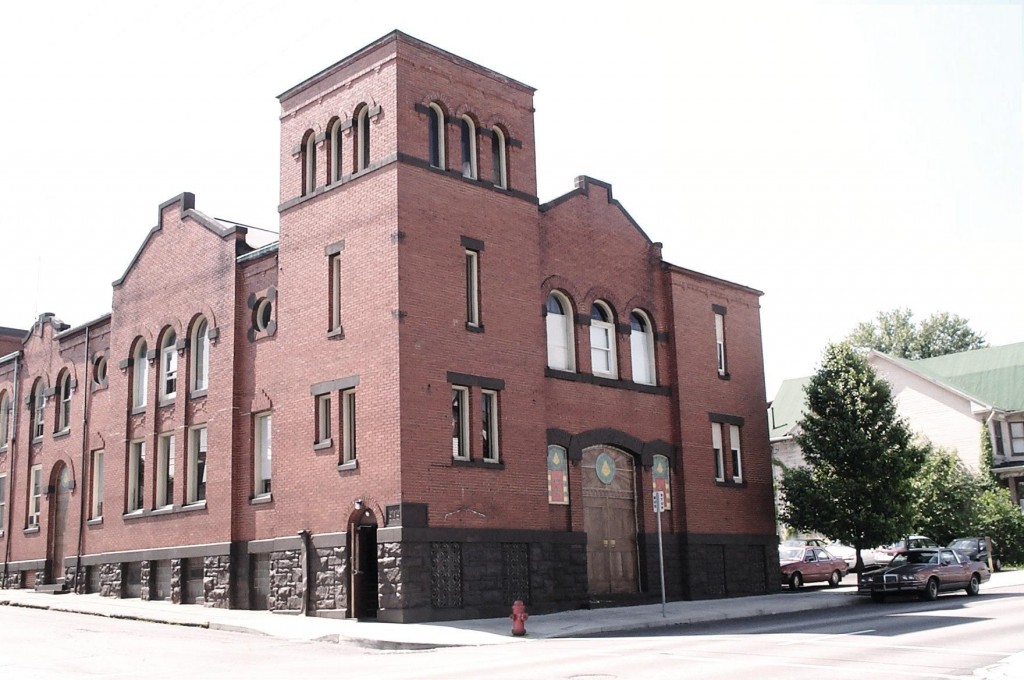A Look At The Cultural Trends That Influence Substance Abuse

Many factors influence substance use, culture being one of them. Culture can influence people’s behaviors, societal norms, and community activities. As all of these can affect drug and alcohol consumption, it becomes clear how certain cultures in certain areas can improve or worsen substance use habits.
How are cultural factors that impact substance use?
The environment of the culture to which one belongs can influence in various ways whether or not substance use occurs.
Cultural norms
In some cultures, substance use is part of society and is accepted as a more normal recreation. For instance, alcohol consumption during celebrations, religious ceremonies or gatherings can be seen in cultures worldwide.
On the other hand, some cultures have stricter rules against substance use, often rooted in religious or moral beliefs. These norms not only influence individual choices but also shape community attitudes toward substance use, determining whether it is socially accepted or rejected.
Family and peer influences
In families where substance use is normalized, individuals may be more likely to try substances, whereas in families where substance use is condemned, individuals may develop negative attitudes toward it. Peers also have considerable influence, particularly during teenage and young adult years, influencing whether or not some individuals are exposed to substances at all.
Socioeconomic and environmental factors
In communities where economic opportunities are limited, substance use may be more prevalent as a coping mechanism for stress, unemployment or social strife. On the other hand, less limited cultures may experience substance use related to recreation and social status.
Environmental factors, including the availability of substances and the presence of substance use in media and popular culture, further shape behaviors. Cultures with strict regulations and enforcement may see lower rates of substance use, while those with lax controls may see higher rates.
Social media and pop culture
Movies, television shows, music and social media often glamorize substance use, depicting it as a marker of social status, rebellion or escapism. These portrayals can shape public perceptions and attitudes, particularly among young audiences, and can normalize substance use, making it appear less risky and more socially acceptable.
Does Western PA culture impact substance use?
Western Pennsylvania, notably Pittsburgh, has a storied history rooted in industrialization. Sometimes referred to as the “Steel City,” Pittsburgh was the heart of steel production in the US. The labor-intensive industries fostered a culture of hard work, resilience and community.
However, the steel industry’s decline in the late 20th century led to significant economic hardships, including job losses, poverty, and a sense of collective identity crisis. These challenges have had a lasting impact on the region, contributing to stressors that possibly contributed to the prevalent substance use in the area.
Community attitudes
Pittsburgh is characterized by its tight-knit communities, often centered around neighborhoods with rich cultural heritages. These communities provide strong support networks, which can have both positive and negative influences when considering substance use.
On one hand, close communities can offer support and resources for individuals struggling with substance abuse. However, communities can sometimes stigmatize substance use, making it difficult for individuals to seek help and step out of the cultural norm.
Attitudes towards mental health and substance use in Western PA are evolving, but there are still remnants of stigma and misunderstanding. Historically, mental health issues and substance use were often seen as personal failings rather than medical conditions requiring treatment. This perspective can harm one’s attempts to get help, as individuals may be reluctant to seek treatment due to fear of judgment or rejection.
However, recent efforts by local organizations, healthcare providers, and community initiatives have begun to change this narrative. Increased awareness campaigns, the integration of mental health services within primary care and community-based support programs are gradually reducing stigma and encouraging more people to seek help.
Substance use trends and cultural influences
The types of substances used and the patterns of substance use in Western PA and Pittsburgh are also influenced by cultural factors. For instance, alcohol has long been a socially accepted substance within many communities, often associated with social gatherings, sports events and family traditions. This cultural acceptance can sometimes obscure the potential for alcohol misuse.
The opioid crisis has been particularly devastating in this region. The prevalence of prescription opioid abuse can be traced back to aggressive marketing by pharmaceutical companies, combined with a high prevalence of chronic pain conditions among former steel mill workers. The transition from prescription opioids to illicit substances like heroin and fentanyl has further complicated the problem of substance use in the area.
Role of educational institutions
Pittsburgh is home to several renowned educational institutions, including the University of Pittsburgh and Carnegie Mellon University. These institutions are crucial in shaping the cultural landscape, including attitudes towards substance use.
Research and outreach programs from these universities have contributed to a better understanding of substance use disorders and effective intervention strategies. Educational institutions also serve as hubs for innovative approaches to prevention and treatment, fostering a community that is more informed and proactive in addressing substance use issues.
Seeking help?
If you are seeking help for substance use, contact Pyramid Healthcare. To contact a mental health counselor today, call 888-694-9996 or fill out an online contact form to get started.
Many factors influence substance use, culture being one of them. Culture can influence people’s behaviors, societal norms, and community activities. As all of these can affect drug and alcohol consumption, it becomes clear how certain cultures in certain areas can improve or worsen substance use habits.
How are cultural factors that impact substance use?
The environment of the culture to which one belongs can influence in various ways whether or not substance use occurs.
Cultural norms
In some cultures, substance use is part of society and is accepted as a more normal recreation. For instance, alcohol consumption during celebrations, religious ceremonies or gatherings can be seen in cultures worldwide.
On the other hand, some cultures have stricter rules against substance use, often rooted in religious or moral beliefs. These norms not only influence individual choices but also shape community attitudes toward substance use, determining whether it is socially accepted or rejected.
Family and peer influences
In families where substance use is normalized, individuals may be more likely to try substances, whereas in families where substance use is condemned, individuals may develop negative attitudes toward it. Peers also have considerable influence, particularly during teenage and young adult years, influencing whether or not some individuals are exposed to substances at all.
Socioeconomic and environmental factors
In communities where economic opportunities are limited, substance use may be more prevalent as a coping mechanism for stress, unemployment or social strife. On the other hand, less limited cultures may experience substance use related to recreation and social status.
Environmental factors, including the availability of substances and the presence of substance use in media and popular culture, further shape behaviors. Cultures with strict regulations and enforcement may see lower rates of substance use, while those with lax controls may see higher rates.
Social media and pop culture
Movies, television shows, music and social media often glamorize substance use, depicting it as a marker of social status, rebellion or escapism. These portrayals can shape public perceptions and attitudes, particularly among young audiences, and can normalize substance use, making it appear less risky and more socially acceptable.
Does Western PA culture impact substance use?
Western Pennsylvania, notably Pittsburgh, has a storied history rooted in industrialization. Sometimes referred to as the “Steel City,” Pittsburgh was the heart of steel production in the US. The labor-intensive industries fostered a culture of hard work, resilience and community.
However, the steel industry’s decline in the late 20th century led to significant economic hardships, including job losses, poverty, and a sense of collective identity crisis. These challenges have had a lasting impact on the region, contributing to stressors that possibly contributed to the prevalent substance use in the area.
Community attitudes
Pittsburgh is characterized by its tight-knit communities, often centered around neighborhoods with rich cultural heritages. These communities provide strong support networks, which can have both positive and negative influences when considering substance use.
On one hand, close communities can offer support and resources for individuals struggling with substance abuse. However, communities can sometimes stigmatize substance use, making it difficult for individuals to seek help and step out of the cultural norm.
Attitudes towards mental health and substance use in Western PA are evolving, but there are still remnants of stigma and misunderstanding. Historically, mental health issues and substance use were often seen as personal failings rather than medical conditions requiring treatment. This perspective can harm one’s attempts to get help, as individuals may be reluctant to seek treatment due to fear of judgment or rejection.
However, recent efforts by local organizations, healthcare providers, and community initiatives have begun to change this narrative. Increased awareness campaigns, the integration of mental health services within primary care and community-based support programs are gradually reducing stigma and encouraging more people to seek help.
Substance use trends and cultural influences
The types of substances used and the patterns of substance use in Western PA and Pittsburgh are also influenced by cultural factors. For instance, alcohol has long been a socially accepted substance within many communities, often associated with social gatherings, sports events and family traditions. This cultural acceptance can sometimes obscure the potential for alcohol misuse.
The opioid crisis has been particularly devastating in this region. The prevalence of prescription opioid abuse can be traced back to aggressive marketing by pharmaceutical companies, combined with a high prevalence of chronic pain conditions among former steel mill workers. The transition from prescription opioids to illicit substances like heroin and fentanyl has further complicated the problem of substance use in the area.
Role of educational institutions
Pittsburgh is home to several renowned educational institutions, including the University of Pittsburgh and Carnegie Mellon University. These institutions are crucial in shaping the cultural landscape, including attitudes towards substance use.
Research and outreach programs from these universities have contributed to a better understanding of substance use disorders and effective intervention strategies. Educational institutions also serve as hubs for innovative approaches to prevention and treatment, fostering a community that is more informed and proactive in addressing substance use issues.
Seeking help?
If you are seeking help for substance use, contact Pyramid Healthcare. To contact a mental health counselor today, call 888-694-9996 or fill out an online contact form to get started.
















